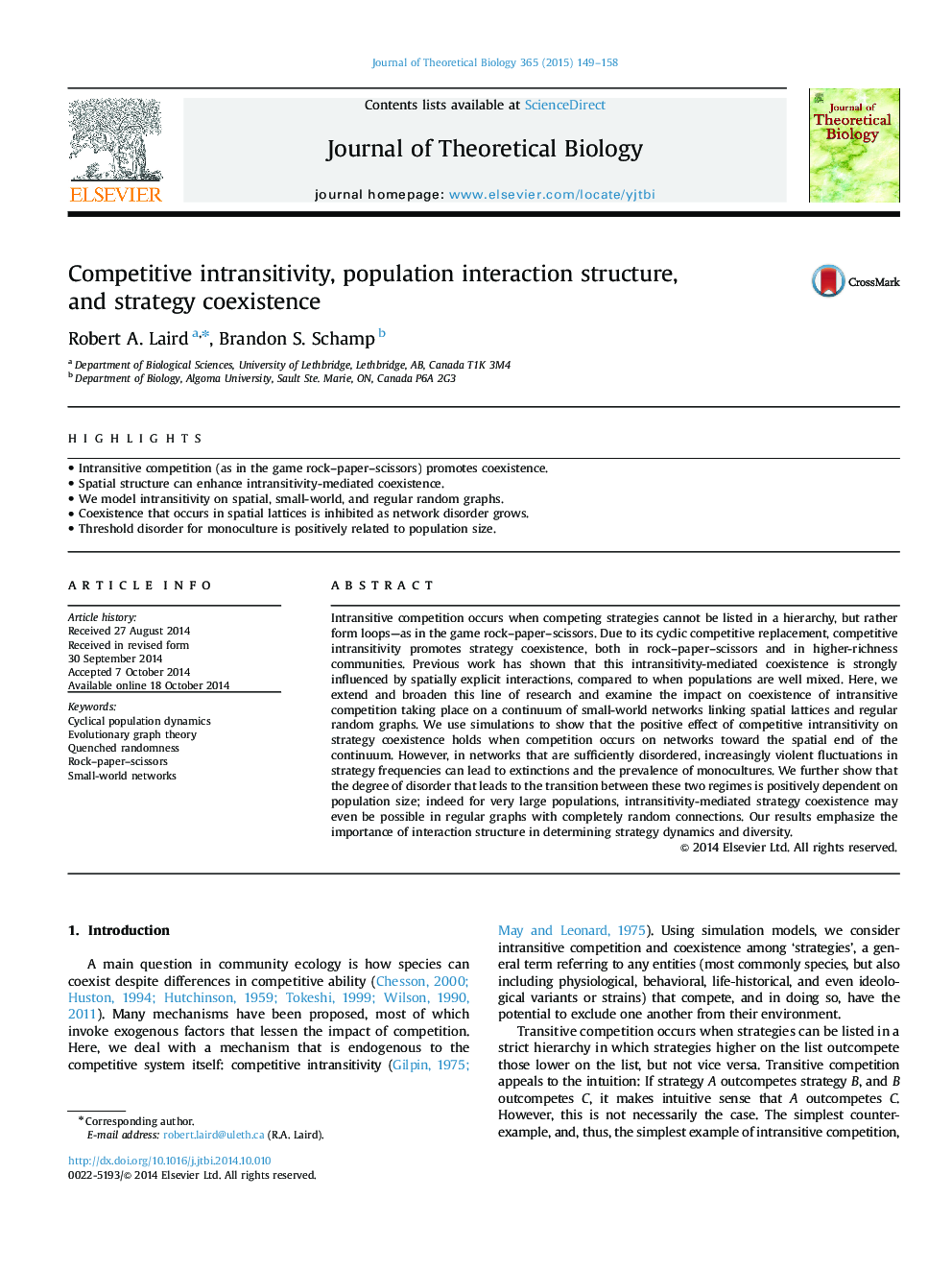| Article ID | Journal | Published Year | Pages | File Type |
|---|---|---|---|---|
| 6370003 | Journal of Theoretical Biology | 2015 | 10 Pages |
â¢Intransitive competition (as in the game rock-paper-scissors) promotes coexistence.â¢Spatial structure can enhance intransitivity-mediated coexistence.â¢We model intransitivity on spatial, small-world, and regular random graphs.â¢Coexistence that occurs in spatial lattices is inhibited as network disorder grows.â¢Threshold disorder for monoculture is positively related to population size.
Intransitive competition occurs when competing strategies cannot be listed in a hierarchy, but rather form loops-as in the game rock-paper-scissors. Due to its cyclic competitive replacement, competitive intransitivity promotes strategy coexistence, both in rock-paper-scissors and in higher-richness communities. Previous work has shown that this intransitivity-mediated coexistence is strongly influenced by spatially explicit interactions, compared to when populations are well mixed. Here, we extend and broaden this line of research and examine the impact on coexistence of intransitive competition taking place on a continuum of small-world networks linking spatial lattices and regular random graphs. We use simulations to show that the positive effect of competitive intransitivity on strategy coexistence holds when competition occurs on networks toward the spatial end of the continuum. However, in networks that are sufficiently disordered, increasingly violent fluctuations in strategy frequencies can lead to extinctions and the prevalence of monocultures. We further show that the degree of disorder that leads to the transition between these two regimes is positively dependent on population size; indeed for very large populations, intransitivity-mediated strategy coexistence may even be possible in regular graphs with completely random connections. Our results emphasize the importance of interaction structure in determining strategy dynamics and diversity.
